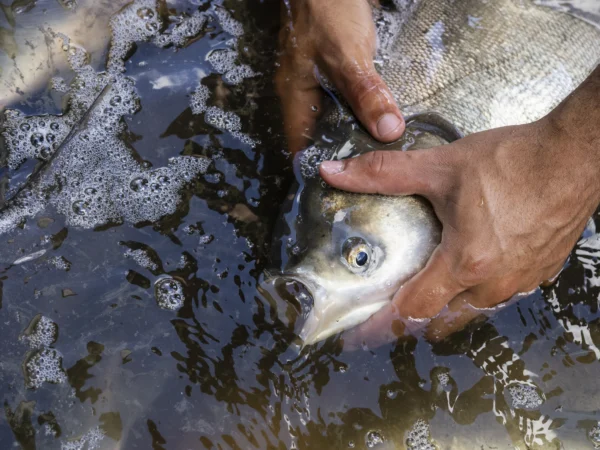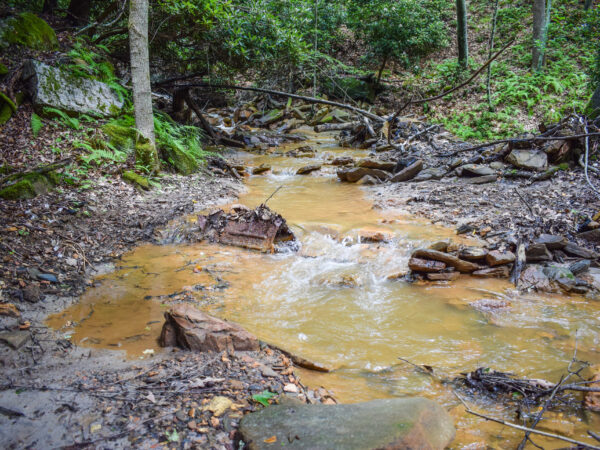
It’s been 140 years since a group of U.S. steamship companies formed an alliance called the Cleveland Vessel Owners Association, whose primary purpose was to promote safe navigation by the ships that plied the Great Lakes.
That original alliance has since become the Lake Carriers’ Association, which is still based in Cleveland and represents the interests of companies that have a combined 46 vessels on the lakes and move 90 million tons of cargo annually.
While safe navigation is still an emphasis of LCA, its mission has expanded over the years to include lobbying for infrastructure improvements, testifying before Congress on issues that impact Great Lakes shipping and environmental stewardship.
James Weakley, a retired U.S. Coast Guard officer, is president of the Lake Carriers’ Association and represents Ohio on the Great Lakes Commission.
Great Lakes Now senior correspondent Gary Wilson recently talked with Weakley about the state of Great Lakes shipping for U.S Flag carriers and the issues the industry faces.
Weakley covered COVID-19’s impact on the industry, the “good news” about a new Soo lock, the travails of lobbying for an icebreaker, and tension between the U.S. and Canada over shipping issues.
The interview took place over the phone and via email. It was recorded, transcribed and edited for length and clarity.
Great Lakes Now: On this 140-year anniversary of the Lake Carriers’ Association, what is the state of Great Lakes shipping? Especially in light of COVID-19 where demand for manufacturing raw material like iron ore has declined?
James Weakley: The biggest challenge right now is the lack of demand due to COVID-19. In 2019 we had a good year; we were up 7.5% compared to 2018. Fast forward to September 2020 and our iron ore cargoes are down 27% from last year at this time. Limestone, our No. 2 cargo, is down 17%. We have over 10 lakers that are not sailing right now that sailed last year and would be sailing if it wasn’t for the lack of demand.
Watch Great Lakes Now‘s segment that covers shipping during COVID-19:
API key not valid. Please pass a valid API key.GLN: Operationally, LCA calls the Soo Locks the “Lynchpin of the Great Lakes,” and your 2020 State of the Great Lakes report says work on a long-needed new lock that will accommodate the biggest freighters is advancing. What’s the status?
JW: That’s a huge good-news story. To date, $241 million has been allocated for the billion-dollar project and it remains on pace to be built efficiently, which is in a five- to seven-year timeframe. Dredging has started on the upstream approach and a contract was recently awarded for the approach wall to an Ohio-based company and their Michigan-based subsidiary. I like to see that money stay in the Great Lakes basin.
Phase three of the project will probably be awarded next year for the lock chamber construction. That’s great news. We literally spent 10 years arguing with the Army Corp of Engineers over the need for this project, but I have to say, the Corps is doing a good job of getting the job done. I’m excited to get it built.
Watch Great Lakes Now‘s segment on the Soo Locks:
API key not valid. Please pass a valid API key.GLN: LCA has been lobbying the U.S. Coast Guard and Congress for a new icebreaker for years. Your annual report says Congress has authorized preliminary funding for the project but you “have not been able to make headway with USCG.” What are the Coast Guard’s objections?
JW: There’s a lot of opposition within the Coast Guard to this project. I hope we don’t spend 10 years fighting with the Coast Guard like we did with the Army Corps over the new Soo Lock.
They initially claimed they had other priorities like the polar ice-breaking program, and we understood that. In fact, we wanted to attach ourselves to that program since there are good synergies between the two.
But the metrics the Coast Guard is using to evaluate the need for the icebreaker are flawed. They indicate that current icebreaker capacity is sufficient and that’s not the case.
There are two solutions. The first is the Great Lakes Winter Commerce Act which was recently introduced and that solves the metrics problem. The second is to have Congress direct the Coast Guard to build another icebreaker. We’ve got about $14 million toward the design and to create a program office.
GLN: Environmentally, lake carriers have historically been at odds with conservation groups over ballast water regulations designed to keep aquatic invasive species out of the lakes. What’s the status of that issue? Is it resolved or is there still work to do?
JW: There’s still work to do but it’s a good-news story.
LCA and the conservation groups are united on prevention and keeping aquatic invasives out of the Great Lakes. The good news is that there have been no new introductions from ballast water since 2006. During that same timeframe there’s been no ballast water expansion of invasives in the Great Lakes. Our best management practices are working to stop introductions and their spread as well.
New regulatory standards from the U.S. Environmental Protection Agency were just released and we are reviewing them. They set a national standard for regulating ballast water that replaces the patchwork quilt that previously existed, so that’s progress. The Coast Guard has two years to do their ballast water regulations, so it’s still an evolving regulatory scheme.
GLN: The Great Lakes are shared waters between the U.S. and Canada, but the report describes tension between the countries over ballast water and icebreaking. The U.S and Canada are generally in lockstep on Great Lakes issues. What’s going on?
JW: The Canadian government has done a really good job of implementing a Canada-first policy. The best example is the ballast water regulations.
They’ve basically done an economic power-grab to ensure that the Canadian lakers not only control the domestic Canadian trade but also have a monopoly on the U.S and Canada cross-lake trade. Canada wants to regulate ballast water discharged in the U.S. if it is loaded in Canada. They would prevent American ships from transporting American exports to Canada.
On icebreakers, again, Canada has done a really good job of taking advantage of the situation. We have nine icebreakers on the Great Lakes, Canada has two. Canada has 85 vessels, the U.S has 46 lakers. They have a policy of giving preferential treatment to Canadian lakers in Canadian ports. We respect their right to do that, but our frustration is when they do, they abandon the shared responsibility over waterways like the St. Marys River and leave all that responsibility to the U.S.
GLN: The annual report doesn’t mention climate change. How does the industry view its role in dealing with climate change?
JW: One of the advantages of shipping is that it consumes less energy than other modes of transportation. We can move a ton of iron ore from Duluth-Superior to Detroit or Chicago on about one gallon of fuel. Moving cargo from land-based transportation to maritime not only reduces carbon dioxide it also reduces particulate matter, so it’s an environmental move in the right direction.
Climate change is complicated in that we’ve seen the polar vortices produce significantly colder winters that give us arctic blasts, which increases the need for icebreaking.
Our industry is very environmentally focused. Our sailors hunt, fish and are from the Great Lakes region. We take care of the environment that we operate in. We’re not foreign operators that come in to make a quick buck and leave. We take our environmental footprint seriously, and we take the climate change issue not just as a moral issue but also an operational challenge.
GLN: Following a Coast Guard career, you assumed the helm at the Lake Carriers’ Association in 2003. How has lakes shipping evolved in those 17 years?
JW: We’ve been more focused on a system-based approach. In 2014 the Great Lakes were first designated as a navigation system.
That’s important because on dredging, it’s important to dredge not just Duluth, you have to dredge Detroit too. That’s made us more effective in Washington and is part of what’s helped us get the dredging crisis well on its way to resolution. It’s helped get the new Soo lock built and hopefully it will help us get that icebreaker. It’s more a policy change, and it’s a systematic approach to issues rather than one that’s piecemeal.
GLN: The average person may enjoy freighter watching from the banks of the Detroit River or the Port of Duluth but doesn’t think much about them beyond that. What’s the most important thing for those casual observers to know about lake freighters?
JW: They’re not just good-looking ships. They’re the grease that keeps the economy moving. We’re the backbone of American manufacturing, construction and power production. We’re less disruptive than other modes of transportation and we’re the most environmentally friendly mode of transport.
Plus, my daughter when she was in kindergarten once said, “Dad, ships are cool.”
Catch up with more shipping news on Great Lakes Now:
Shipping Continues: Great Lakes shipping season opens with extra social distancing
Fishing and Freighters: Great Lakes industries take COVID-19 economic hit
Freighter Photos: Check out some stunning images of the vessels traversing the lakes
Great Lakes freighters may have to treat ballast water
API key not valid. Please pass a valid API key.Featured image: James Weakley, president of the Lake Carriers’ Association (Photo: Tom Rayburn / Lake Carriers’ Association)




